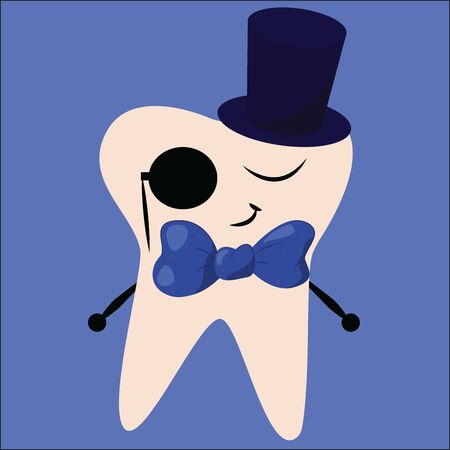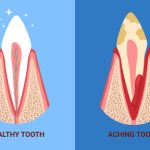1. Understanding Veneers: What Are They and How Do They Work?
Dental veneers are a popular cosmetic dentistry solution designed to enhance the appearance of your smile. These thin, custom-made shells are bonded to the front surface of your teeth to improve their shape, color, and overall look. Whether youre dealing with discoloration, chips, gaps, or minor misalignment, veneers can provide a quick and effective way to achieve a flawless smile.
Types of Dental Veneers
There are several types of veneers available, each with its own benefits and drawbacks. Choosing the right type depends on factors like budget, durability, and aesthetic preferences. Here’s a comparison of the most common veneer options:
| Type | Description | Durability | Cost |
|---|---|---|---|
| Porcelain Veneers | Made from high-quality ceramic, porcelain veneers closely resemble natural teeth and resist stains. | 10-15 years | Higher cost |
| Composite Veneers | A more affordable option made from composite resin; can be applied in a single visit. | 5-7 years | Lower cost |
| No-Prep Veneers | A thinner version of traditional veneers that require little to no enamel removal. | 10+ years | Moderate cost |
| Snap-On Veneers | A removable alternative that fits over your existing teeth for a temporary smile enhancement. | Varies (not permanent) | Lowest cost |
The Process of Getting Veneers
The procedure for getting veneers depends on the type you choose but typically involves the following steps:
1. Consultation and Evaluation:
Your dentist will assess your dental health and discuss your goals to determine if veneers are right for you.
2. Tooth Preparation:
If necessary, a small amount of enamel may be removed to ensure a perfect fit for the veneers.
3. Impression or Digital Scan:
An impression or scan is taken to create custom veneers that match your natural teeth.
4. Placement and Bonding:
The veneers are carefully placed and bonded to your teeth using dental adhesive for a secure hold.
The Benefits of Dental Veneers
- Aesthetic Improvement: Veneers instantly brighten and reshape your smile.
- Diverse Options: From porcelain to snap-on choices, there’s an option for every budget.
- Minimally Invasive: No-prep and composite veneers offer less invasive alternatives.
- Stain Resistance: Porcelain veneers resist staining better than natural teeth.
- Lifespan: With proper care, high-quality veneers can last over a decade.
If youre looking for an affordable way to improve your smile, understanding the different veneer options available is the first step. Each type offers unique advantages depending on your needs and budget, making it possible to achieve a beautiful smile without breaking the bank.
2. Affordable Veneer Options: Materials and Cost Comparisons
When it comes to budget-friendly veneers, two of the most common options are composite resin and porcelain. Each material has its own advantages, drawbacks, and price range. Understanding these differences can help you make an informed decision based on your needs and budget.
Composite Resin Veneers
Composite resin veneers are one of the most affordable options for improving your smile. These veneers are made from a tooth-colored resin material that is applied directly to your teeth and shaped by a dentist.
Pros of Composite Resin Veneers
- Cost-effective: Generally more affordable than porcelain veneers.
- Quick application: Can often be completed in a single dental visit.
- Less enamel removal: Requires minimal preparation compared to porcelain.
- Easy repairs: If damaged, they can be repaired rather than replaced.
Cons of Composite Resin Veneers
- Durability: Less durable than porcelain, with an average lifespan of 5-7 years.
- Stain-prone: More likely to stain over time from coffee, tea, or smoking.
- Aesthetic limitations: May not look as natural or translucent as porcelain veneers.
Porcelain Veneers
Porcelain veneers are a more durable option that offers a natural appearance. While they tend to be more expensive than composite resin veneers, they last longer and resist stains better.
Pros of Porcelain Veneers
- Natural look: Mimics the translucency and shine of natural teeth.
- Long-lasting: Can last 10-15 years or longer with proper care.
- Stain-resistant: Less prone to discoloration compared to composite resin.
- Strong and durable: More resistant to chips and cracks than composite resin.
Cons of Porcelain Veneers
- Higher cost: More expensive upfront compared to composite resin.
- Permanence: Requires some enamel removal, making the process irreversible.
- Takes multiple visits: Typically requires two or more appointments for placement.
Cost Comparison: Composite Resin vs. Porcelain Veneers
The cost of veneers varies depending on factors such as location, dentist expertise, and the number of teeth being treated. Below is a general price comparison between composite resin and porcelain veneers:
| Veneer Type | Average Cost per Tooth | Lifespan | Stain Resistance | Repairability |
|---|---|---|---|---|
| Composite Resin | $250 – $1,500 | 5 – 7 years | Low (Prone to staining) | Easily repairable |
| Porcelain | $900 – $2,500 | 10 – 15 years | High (Resistant to stains) | Must be replaced if damaged |
If youre looking for an affordable option with quicker application, composite resin veneers may be the right choice. However, if longevity and aesthetics are a priority, investing in porcelain veneers could be worth the extra cost. Discussing your goals with a dentist can help you determine which option best fits your needs and budget.

3. Snap-On Veneers vs. Traditional Veneers: Which Is Right for You?
When considering budget-friendly veneers, two popular options are snap-on veneers and traditional veneers. Both can enhance your smile, but they differ in durability, appearance, and overall investment. Understanding these differences will help you make the best choice for your needs.
Durability: Temporary vs. Permanent
One of the biggest differences between snap-on veneers and traditional veneers is durability. Snap-on veneers are made from resin or plastic materials and are designed to be removable, meaning they won’t last as long as permanent veneers. Traditional veneers, typically crafted from porcelain or composite resin, are bonded to your natural teeth and can last for years with proper care.
Appearance: Natural Look and Feel
If you’re looking for the most natural-looking smile, traditional veneers generally offer better aesthetics. Porcelain veneers mimic the translucency of real teeth, making them almost indistinguishable from natural enamel. On the other hand, snap-on veneers can still improve your smile but may appear slightly bulkier and less realistic due to their material and design.
Investment: Cost and Maintenance
Cost plays a significant role in choosing between these two options. Snap-on veneers are more affordable upfront, making them a great temporary solution for special occasions or those not ready to commit to permanent dental work. Traditional veneers require a higher initial investment but offer long-term value due to their durability.
| Feature | Snap-On Veneers | Traditional Veneers |
|---|---|---|
| Durability | Temporary (1-5 years) | Long-lasting (10-20 years) |
| Appearance | Good but may look slightly artificial | Natural-looking with a seamless finish |
| Cost | Lower upfront cost ($300-$1,000 per set) | Higher initial cost ($900-$2,500 per tooth) |
| Maintenance | Removable, requires regular cleaning | Permanently bonded, regular oral hygiene needed |
| Best For | Temporary use or budget-conscious individuals | Long-term smile enhancement |
Which Option Should You Choose?
The right choice depends on your goals and budget. If you need an affordable way to improve your smile temporarily without committing to permanent changes, snap-on veneers might be ideal. However, if youre looking for a long-lasting and natural-looking solution, investing in traditional veneers could be worth it in the long run.
No matter which option you choose, both can help boost your confidence and give you a brighter smile!
4. Finding Quality Budget Veneers: Tips for Choosing the Right Provider
Finding affordable veneers doesn’t mean you have to sacrifice quality. Whether youre considering a local dentist or an online veneer provider, its important to do your research and ensure youre making a safe and informed decision.
Choosing a Reputable Dentist
If youre opting for in-office veneers, selecting a qualified dentist is key. Here are some tips to help you find a trustworthy provider:
- Check Credentials: Look for a licensed cosmetic dentist with experience in veneer procedures.
- Read Reviews: Online reviews on Google, Yelp, and healthcare websites can provide insight into patient experiences.
- Ask for Before-and-After Photos: A reputable dentist should have a portfolio of past work to showcase their results.
- Schedule a Consultation: A consultation allows you to discuss your options, understand the costs, and get a feel for the dentist’s expertise.
Exploring Online Veneer Providers
If youre considering mail-order veneers, choosing the right provider is just as important. Here’s what to look for:
| Factors | What to Check |
|---|---|
| Reputation | Look for brands with positive customer feedback and proven success stories. |
| Material Quality | Avoid companies that use cheap plastics; opt for durable resin or porcelain alternatives. |
| Customization | The best providers offer custom-fit veneers based on impressions of your teeth. |
| Return Policy & Warranty | A reliable company should offer a satisfaction guarantee or warranty in case of issues. |
| Customer Support | You should be able to contact support easily if you have any questions or concerns. |
Understanding Potential Risks of Low-Cost Veneers
Bargain veneers can be tempting, but they may come with risks. Here are some things to watch out for:
- Poor Fit: Ill-fitting veneers can cause discomfort or even damage your natural teeth.
- Low-Quality Materials: Cheap materials may discolor quickly, break easily, or look unnatural.
- Lack of Professional Guidance: DIY kits may not provide the precision and care needed for proper placement.
- No Long-Term Guarantee: Some budget-friendly options may not last long, requiring frequent replacements.
The Bottom Line: Do Your Research
A beautiful smile doesn’t have to break the bank, but it’s important to choose wisely. Whether working with a dentist or ordering online, take time to research and invest in veneers that balance affordability with quality.
5. Caring for Your Veneers: Maximizing Longevity on a Budget
Getting budget-friendly veneers is a great way to enhance your smile without breaking the bank, but taking proper care of them is essential to ensure they last as long as possible. With the right habits and maintenance routine, you can extend their lifespan while keeping costs low. Here are some practical tips to help you protect your investment.
Daily Oral Hygiene for Veneers
Maintaining good oral hygiene is key to keeping your veneers in great shape. Follow these simple steps every day:
- Brush gently: Use a soft-bristled toothbrush and non-abrasive toothpaste to prevent scratching the surface of your veneers.
- Floss daily: Plaque buildup around your veneers can lead to gum disease and other issues, so make flossing a daily habit.
- Use alcohol-free mouthwash: Alcohol-based mouthwashes can weaken the bonding agent used to attach veneers, so opt for a gentle, alcohol-free option.
Avoiding Foods and Habits That Can Damage Veneers
Certain foods and habits can shorten the lifespan of your veneers. Here’s what to watch out for:
| Avoid | Why? |
|---|---|
| Hard foods (ice, hard candy, nuts) | They can chip or crack veneers. |
| Sticky foods (caramel, chewing gum) | They can pull at the edges of veneers, weakening their bond. |
| Coffee, tea, red wine | These beverages can stain natural teeth and create contrast with your veneers. |
| Nail biting or using teeth as tools | Puts excessive pressure on veneers, leading to damage. |
Avoiding Costly Repairs with Smart Habits
You don’t have to spend a lot of money to keep your veneers in excellent condition. These small changes can save you from costly repairs:
- Wear a mouthguard: If you grind your teeth at night or play sports, a custom mouthguard will protect your veneers from unnecessary wear and tear.
- Avoid smoking: Tobacco use can cause discoloration and weaken the adhesive holding your veneers in place.
- Scheule regular dental check-ups: Visiting your dentist every six months helps catch any potential issues early before they become expensive problems.
The Bottom Line: Affordable Maintenance for Long-Lasting Veneers
Taking care of budget-friendly veneers doesn’t have to be expensive. By practicing good oral hygiene, avoiding damaging foods and habits, and making smart choices in daily life, you can maximize their lifespan without spending extra money on repairs or replacements. A little preventive care goes a long way in keeping your smile looking great for years to come!


